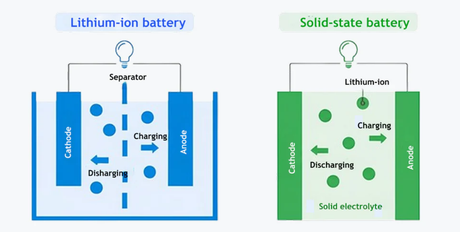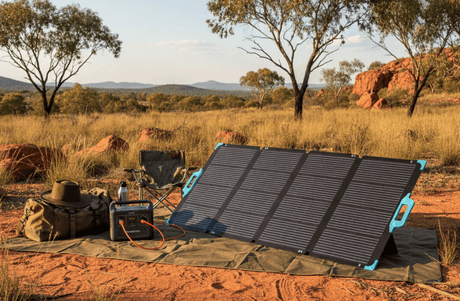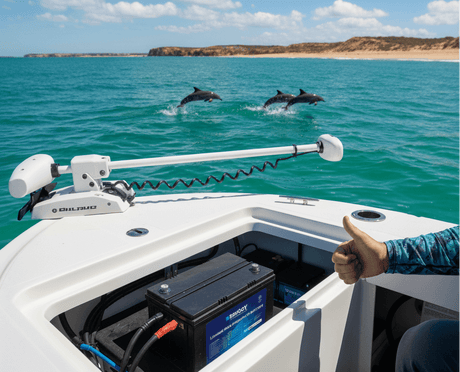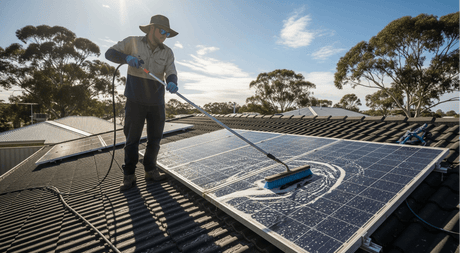2023 Solar Batteries Guide For Home Use In Australia
Solar batteries for homes in Australia differ in a couple of ways compared to other parts of the world.
First of all, Australia is massive. It’s the sixth largest country in the world, which means home solar batteries will need to be sized based on the latitude of your home, since peak sun hours can vary significantly between the northern and southern shores. For an in depth explanation, check out our breakdown of peak sun hours by state.
Secondly, 18% of the mainland is a desert, and a total of 35% of the continent receives so little natural rain that it may as well be classified as a desert. The cooling and pumping requirements of solar batteries for home use in these ultra-dry regions can change the target capacity dramatically.
With these considerations in mind, let’s look at the best way to select a solar battery for home use in Australia.
In this article, we will discuss:
- What Size Should My Home Solar Battery Be?
- Cost Of Solar Batteries For Homes
- Choosing Solar Batteries For Homes
What Size Should My Home Solar Battery Be?
The answer to this depends on whether you want to consider going off the grid entirely, using the grid as an emergency backup, or just using solar power to lessen your grid dependence.
In all of these scenarios: Remember that areas further north will get more peak production hours! This means you can reduce the number of panels slightly, or increase your storage capability slightly if you really want to use every ray of sunshine.
Let’s talk about the average electricity usage for AU homes. Between 14 and 19 kiloWatt hours (kWh) is what the average small family uses every day, depending on the region. That’s about 8 kWh per person in the household. For more exact figures that apply to you, plug all of your appliances into this solar calculator.

The above parameters are inferred according to the electricity consumption habits of most Australian residents and are for reference only. The actual size depends on the equipment type of each user, the sunshine condition in the region, and the equipment quality of the solar energy system.
So for an off grid setup in an area that gets at least 8 peak sun hours on average, you want to budget your home solar batteries so that they get you through the lean times. Consult your region’s meteorological data if you want to see probabilities of multiple days of bad weather in a row. Assume only 6 average peak hours in the winter months, and the possibility of an entire day without any solar generation at all.
In that case, you’ll want around 2 kW of solar panels and 8 kWh of battery storage per person. Off grid has the most extensive home solar battery setup, with the usage of each person needing to be considered for two entire days. So a typical three-member household going entirely offgrid would want around 24 kWh of battery storage and 6 kW of panels to fill the energy supply to capacity in the winter.
If you’re using the grid as a backup, the home solar batteries you use can have a bit more flexibility. You aren’t as concerned about staying absolutely topped up at all times. Avoiding grid usage is a money-saving measure and a reduction of your environmental impact, but if a couple of rainy days in a row happen, it isn’t the end of the world.
Conservatively, you can get away with 1.5 kW of solar panels and 5 kWh of battery storage per person. A three-person household with 4.5 kw of panels and 15 kWh of battery should do just fine most of the time.
For a grid-lite setup, what you want to do primarily is run off of solar during peak energy hours and utilize the grid during off-peak hours if you must. If you only have a single-rate meter in your home, you need to request a change to a two-rate or interval smart meter. Only then can you take advantage of off-peak pricing.
You’ll want to cover at least 10 hours of energy usage a day, typically. That means in our 8-peak sun hour scenario, you’ll want around 1.2 kW of solar panels and 3 kWh of battery storage per person. That should cover the vast majority of your peak energy usage, as long as you don’t get extended rainy periods and assume the battery is correctly configured.
You could add selling back to the grid in the last two scenarios, but it’s generally a ripoff. You save far more money storing or using the energy, and only selling back if your battery is completely full and your production exceeds usage. The buy-back tariff is usually a third or less of what you pay for the same amount of electricity. So try to slate energy intensive tasks (laundry, water heating, etc.) for peak sun hours when possible.
How Much Are Solar Batteries For Homes?
With all that in mind, here’s approximately what you can expect to pay for energy storage in the typical scenarios mentioned above. These prices are independent of EV charging capacity, which will vary from model to model. Remember to add 25% for additional storage if you’re in the ‘power user’ category:

Remember that as long as you’re willing to live a grid-lite lifestyle, you don’t need to commit to the full suggested capacity. The capacity suggested is to avoid paying peak energy rates over the course of many years. But even a 4.8 kWh system is going to reduce your energy bills dramatically, and you can still benefit from otherwise ‘wasted’ energy by selling back to the grid, even if it’s not a great deal. If you’re wondering if it's worth the cost of solar battery, check this blog out then you will get to know the value of solar systems and the payback period.
User Types Of Home Solar Battery
Common batteries include two types: Lithium-ion batteries and lead-acid batteries. AGM batteries are one of the most recent types of lead-acid batteries. Comparing Lithium batteries with AGM batteries, we would know that Lithium batteries are more efficient, more cost-effective, lighter, and provide more stable power in the long term. Outside of solar batteries that are already built into your home, which might be present in new builds, there are a few different scenarios to consider when choosing a battery type:
If you’re living alone or with just a partner in a grid-lite setup, you should be able to get away with two to four 12V 200Ah Lithium Iron Phosphate batteries. Each one represents 2.4 kWh of storage, so using the calculations above, two will more than cover typical peak energy usage hours for one person. Three should cover the typical couple, or four if your energy usage in peak hours is particularly high.
For larger families or in an off grid or grid-as-backup situation, look into installing two or more REGO Lithium Iron Phosphate batteries. Each one represents a massive 5 kWh of storage, and they’re rated for rugged usage and longer lifespans. A family of three opting to use the grid as a backup energy option would want to install three REGOs to reach their 15 kWh capacity, for example.

There are a few scenarios where you might consider more massive storage options. For example, large families with one or more electric vehicles. In cases such as that, you might want a significant amount of storage for the EV, and additional storage for the home. If you would make use of the additional features provided by car-specific charging points, and your EV manufacturer has a compatible battery line (such as Tesla and their Powerwall 2), you might start with one of those. But note that those branded solutions are far more expensive per kWh than other brands. If you wouldn’t use those special features and compatibilities anyway, setting aside a high-density Sungrow modular unit for your car is a much cheaper option. For the rest of the home, you can then consider the REGO setup mentioned above.
Finally, there are the big power users to consider. These are families with heated pools, extensive entertainment options with high electricity draw, an EV, and the like. To put it in perspective, if the average person uses 8kWh, this category of power user will clock in an enormous 12 kWh per person, daily! That means a family of five can easily go over 50 kWh of electricity every day. For big power users, space is the main restriction on how much solar they can generate and store, because they will use it all. If they have the roof space, they should consider upping the generation we suggested above by 50% and storage by 25%. For example, an off grid big power family would want 3 kW of solar panels and 10 kWh of battery storage per person. This will mainly be limited by roof space, and yard availability for additional standing units. Off grid storage will likely be a combination of two Sungrow modular units for cars, pool heating, and security while an array of four or more REGO batteries handle storage for the home itself. The more willing you are to rely on the grid, the less permanent storage is required, of course.
As you can see, the difference between fully off grid generation and storage, and grid tied setups that are mainly trying to reduce costs, is dramatic. An off grid family of five power users might require a staggering 40+ kWh of storage! While the same grid-tied family who is just trying to avoid peak hour energy charges will do fine with between 9 and 11 kWh of storage, if they want to cover most of their peak hour usage on a rainy day. Using that case as an example, being on grid means a 75% reduction in storage needs.
As a side note: Don’t even consider lead-acid batteries for home use these days. The reliability and depth of discharge (DoD) of Lithium simply outmode lead-acid. If you have a small cabin, a work shed, or small-scale mobile applications in mind, lead-acid might be a possibility. For everything else, Lithium is the way to go.
Getting Help With Your Solar Battery For Home
If you have any questions about how to set up your home’s energy storage, or the benefits of smart Bluetooth metering for your home solar battery, contact Renogy to get some help. We’re experts in both the REGO and the Renergy battery systems, and can help you to select the right components for your particular setup.
Related articles:
Smart Lithium Iron Phosphate Batteries For Solar: What Are The Benefits?
Lithium Battery Chargers For Beginners
Everything You Need To Know About Solar Energy & Solar Batteries
Are Lithium Batteries The Best Option For Solar Installations?
Choosing Solar Batteries 2022: Lifepo4 Battery Vs. Lead-Acid Battery





![What Is a DC to DC Battery Charger [Comprehensive Guide]](http://au.renogy.com/cdn/shop/articles/IMG_3829_bd86de74-31d6-49fd-b9d5-265bb723091d.jpg?v=1757582605&width=460)



